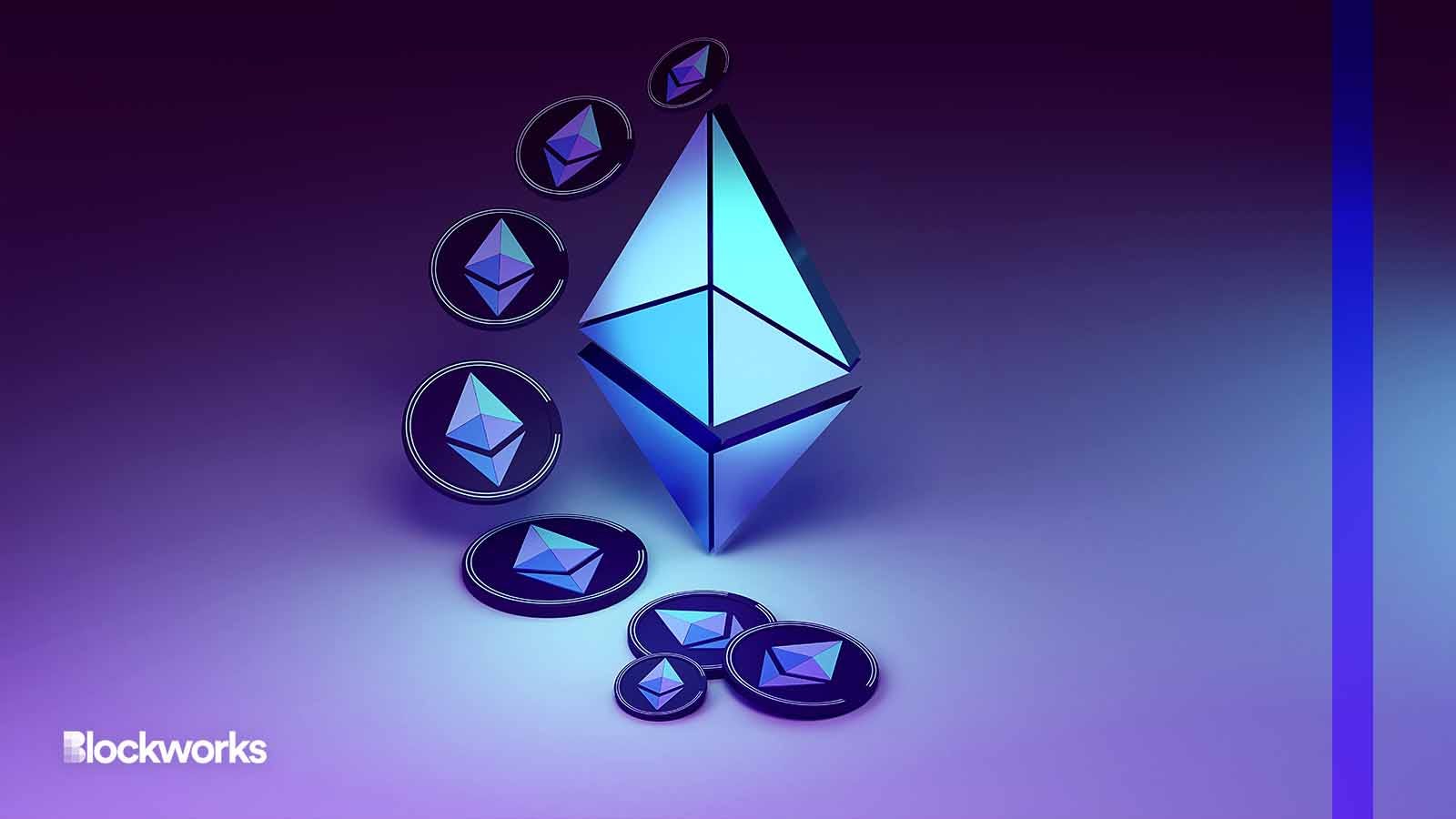Fidelity: How ‘does utility translate into value for ether the token?’
Fidelity Digital Assets, in addition to producing research, backed crypto exchange EDX Markets

CryptoFX/Shutterstock modified by Blockworks
In laying out the bull case for ether on Wednesday, Fidelity’s digital assets subsidiary said dapps built on Ethereum are “capable of things that could not be done on Bitcoin’s network due to Ethereum’s superior programmability.”
Researchers who compiled the report said investors could view ether (ETH) as an “aspiring” form of money.
Ether, they wrote, will “likely face significantly more headwinds than bitcoin to become widely accepted as a form of money.”
Why? Unlike bitcoin (BTC), which has a hard cap of 21 million, ether technically has “unlimited supply parameters” — even though there is a fee burning mechanism. It was introduced by upgrade EIP-1559 in August 2021 and has led to deflationary periods for ether.
There’s uncertainty relating to future upgrades to Ethereum and the number of the tokens in circulation on an untethered schedule, according to the report. And the cumulative effect has been that ether’s supply has a slew of obstacles before it can be “reliably consistent to that of other store of value assets.”
“It seems unlikely that any other digital asset could improve upon bitcoin as a monetary good because bitcoin is viewed by some as the most secure, decentralized, sound digital money to this point, and any “improvement” would require tradeoffs,” the report said.
Fidelity acknowledged that Ethereum’s use of smart contracts, which unlocks a whole new layer of programmability, is ether’s “true differentiating factor.”
The other thesis Fidelity discussed behind ether’s value was its potential to generate yield through staking.
The act of staking ether on the network has changed dramatically since the Shapella upgrade in April 2023.
Fidelity said the payout structure for validators attesting to the blocks of each epoch and for block proposals proffer incentives to stake the maximum of 32 ETH. The base reward is proportional to validators’ effective balance.
The report also pointed out that base reward is inversely proportional to the number of validators.
“The rationale for this issuance formula is to ensure enough validator participation because higher yields are paid if the validator set is small, while also guaranteeing that unexpectedly high issuance will not occur if many validators participate,” the report said.
This balance, Fidelity argued, has allowed Ethereum to sustain yield payouts. Plus, there are forms of yield paid out by users including MEV and tips, which supplement the network’s payout burden.
Fidelity’s ultimate conclusion was that increased activity on Ethereum does in fact drive block space demand, which in turn, generates cash flow for token holders.
But, the report said there remain “complex, nuanced” factors, including protocol and scaling upgrades, that make Ethereum’s future uncertain for investors.
Get the news in your inbox. Explore Blockworks newsletters:
- The Breakdown: Decoding crypto and the markets. Daily.
- 0xResearch: Alpha in your inbox. Think like an analyst.






